With this in-depth guide on how to get cake out of a bundt pan, you'll be able to bake a perfect bundt cake at home in no time!
Bundt cakes are the perfect cakes for any occasion. They're full of moisture, flavorful, and elegant, and can come in a variety of different styles and designs. Not to mention, they're relatively easy to bake, even for beginners. The hardest part about baking a bundt cake? Getting it out of the pan in one piece! No more stuck bundt cakes in the pan!
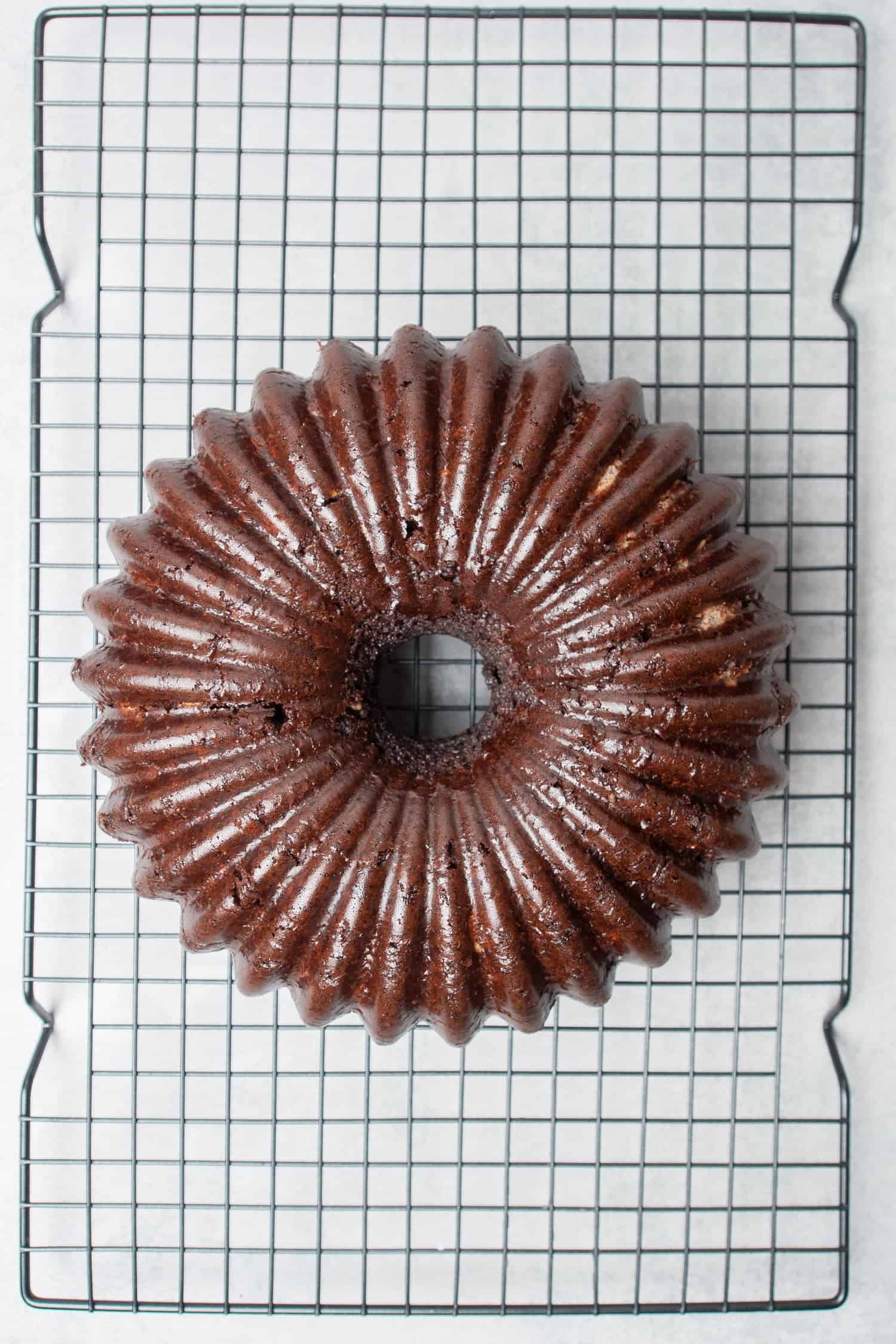
Jump to:
- How To Get Cake Out of a Bundt Pan
- Choosing the Best Bundt Pan
- How to Prepare a Bundt Cake Pan
- How to Properly Bake a Bundt Cake
- How to Properly Cool a Bundt Cake
- How to get stuck cake out of bundt pan?
- Expert Tips for How To Keep Bundt Cake from Sticking to the Pan
- Recommended Equipment
- Bundt Cake FAQs
- Conclusions
- Bundt Cake recipes
How To Get Cake Out of a Bundt Pan
Bundt pans (also sometimes called tube pans) are round, doughnut-shaped pans with a hole in the middle. Due to the bundt pan's depth and design, flipping and removing the cake can be challenging. This is especially true if the bundt cake pan has deep, elaborate grooves and designs.
How to get a bundt cake out of the pan depends on several factors. These factors include the type of pan, the recipe, how you prep the pan before baking, and how you bake and cool the cake. In the following guide, I dive into the tips and tricks so you can always get your cake out of the pan in one piece.
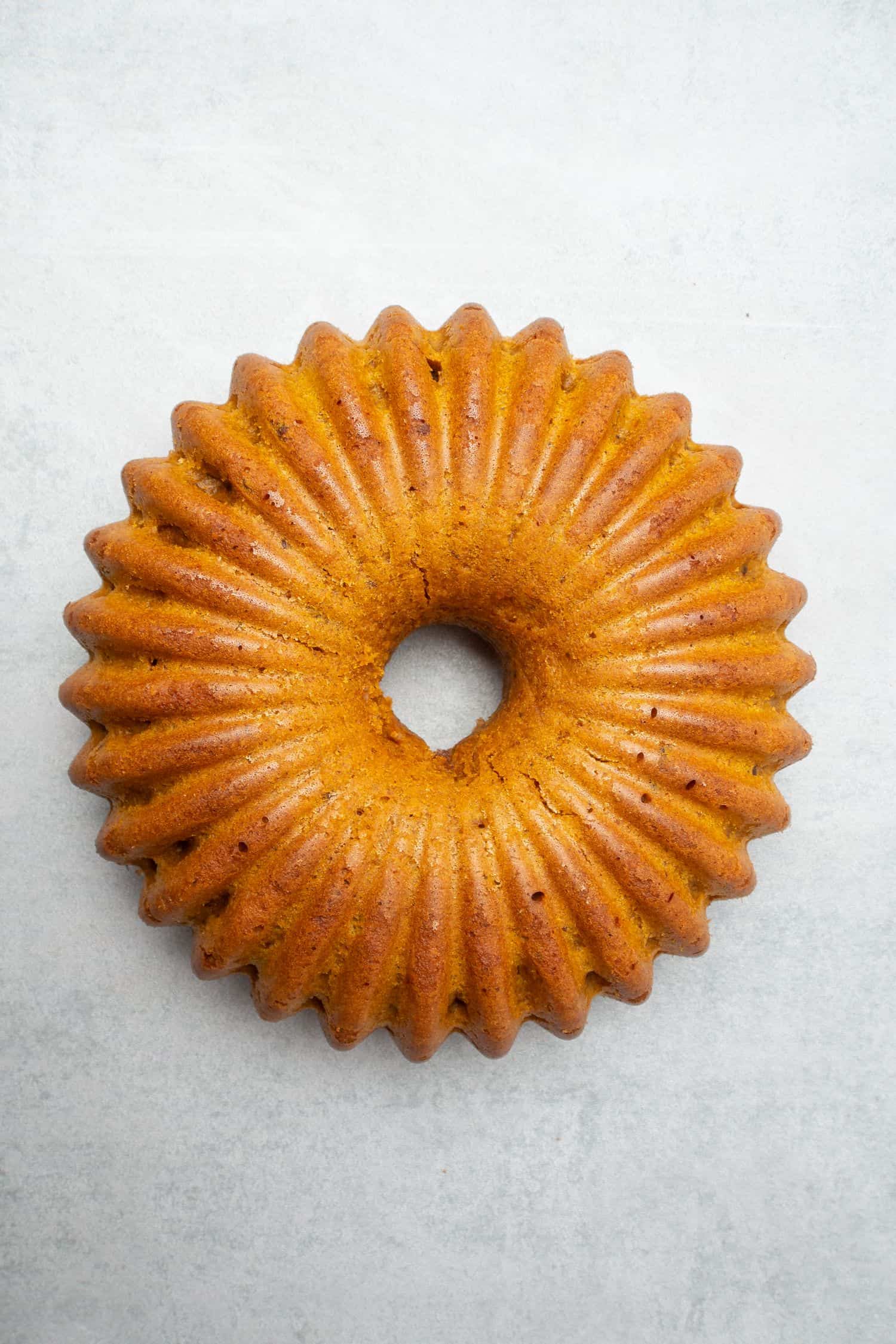
Choosing the Best Bundt Pan
Bundt pans come in many shapes, sizes, and materials. However, the one you choose can make a world of difference in how your cake bakes and how easily it releases from the pan. Here are some of the most important factors to keep in mind when choosing your bundt pan:
Non Stick Coating
No matter which pan you choose, you will want to use a high-quality, non stick pan. When prepared properly, a non stick bundt pan makes it much easier for the cake to release once it is baked. This is especially critical if using a pan with deep, intricate designs.
Color
The color of the bundt pan matters as well. Not only does it affect how the cake bakes, but also how cleanly it releases from the pan. Lighter-colored pans tend to produce a crust with the right amount of crunchiness and color without under or overcooking the cake's interior.
Material
The next important thing to keep in mind is the material of your pan. The material determines how much and how well the pan generates heat, directly affecting the cake quality and how to get the cake out of the bundt pan. Below are four common types of bundt cake pans:
- Aluminum: Some prefer aluminum bundt cake pan due to its color and ability to conduct heat well. Aluminum pans are one of the most commonly used in bundt cake recipes.
- Steel: I also recommend a steel-coated bundt cake pan due to its sturdiness and ability to conduct heat thoroughly. You can also freeze steel pans during the greasing and flouring stage to make removing the cake from the pan easier (more on this later)!
- Silicone: For beginners, a silicone bundt cake pan is the best option for learning how to get cake out of a bundt pan. Not only is it super easy to remove, but it also gives a beautiful definition to the cake. However, keep in mind that silicone pans may lack the stability to handle heavy batters if they are not sturdy enough (putting you at risk for spills). That said, choosing a high-quality silicone bundt pan is crucial to ensure sturdiness and proper heat distribution.
- Glass: While a glass bundt cake pan is also an option, they aren't recommended as they do not conduct enough heat for a desirable result.
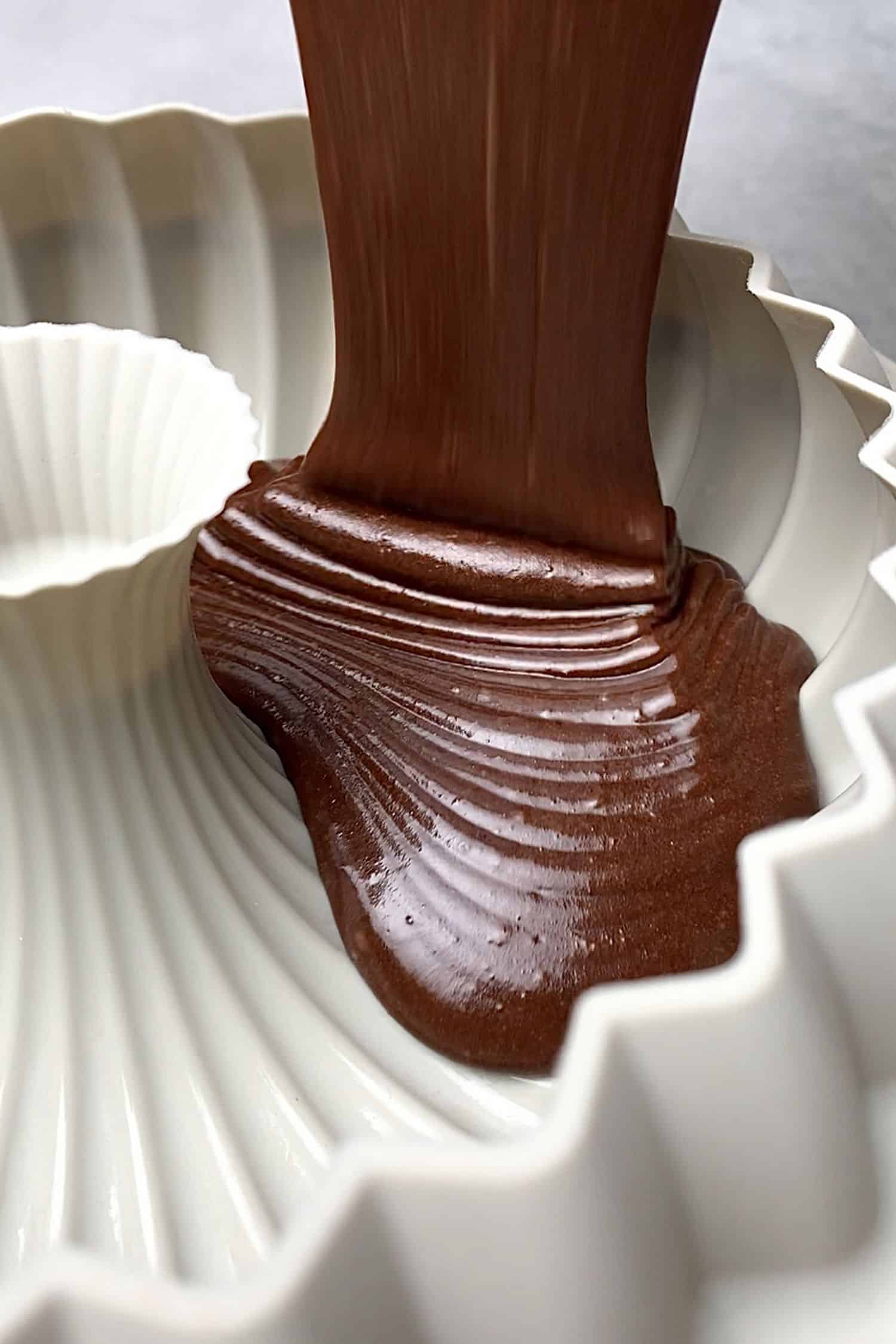
How to Prepare a Bundt Cake Pan
Before baking your bundt cake, you will want to ensure that the pan is as heavily coated as possible. The more properly covered it is, the easier it will be to get the cake out of the pan.
As mentioned earlier, selecting a good non stick pan is the first step in preparing your cake for baking. However, even with a good non stick pan, you will need to thoroughly grease and flour the pan.
Greasing the Pan
You'll come across many methods and ways to grease a pan on the internet. Some include greasing with butter, some recommend shortening or vegetable oil, and others may even use non stick spray (which I do not use). However, for all my recipes I use a soft, high-fat content butter to grease the bundt pan. Here's how to grease a bundt pan:
- Spread the soft (not melted) butter around the entire bundt pan using your pastry brush. You can also use your fingers if you do not have a pastry brush available.
- Patiently cover every corner of the pan, taking care not to miss a single spot.
Flouring the Pan
Once you completely grease the pan, it is time to flour it. When flouring the pan, the key is to dust it with the flour very lightly. Using too much flour can result in a powdery residue all over the cake, not to mention a change in its taste. Here's how to flour a bundt pan:
- Hold the pan over a sink and lightly sprinkle the flour into the pan.
- Tilt and rotate the pan in a circular motion to distribute the flour. It helps to tap the pan as you go to make sure that you evenly distribute the flour. Don't forget to cover the center tube of the pan as well!
- Once you've thoroughly coated the pan with the flour, flip the pan over and lightly tap out the excess flour.
- If using a steel bundt pan, place the pan in the freezer while preparing the batter.
How to Properly Bake a Bundt Cake
There are several factors that add up to making an adequately baked bundt cake: Ingredients, temperature, timing, and texture.
Ingredients
Always use the proper ingredients and not too much or too little of what is required in the recipe. It is helpful to have a digital scale handy to ensure you have the proper measurements. When filling the pan, be careful not to over-fill or under-fill the pan. With most of my recipes, I recommend filling the pan roughly two-thirds the height of the pan.
Temperature
The temperature plays a big part in how well the cake is baked as well as how easy it is for the cake to release from the pan. If the baking temperature is too low, you could end up with a raw cake in the middle or cake that breaks apart when you attempt to remove it from the pan.
On the other hand, if the baking temperature is too high, it increases the chance that the batter burns into the pan and does not come out without breaking into pieces. It helps to use a digital oven thermometer to follow the exact recipe temperature and encourage the cake to release on its own.
Timing and Texture
For flawless removal of cake from a bundt pan, you first want to follow the recommended baking time in your recipe to ensure the cake bakes entirely. However, the best time to remove cake from bundt pans also depends on the cake's texture.
You can check how well the cake is baked by sticking a toothpick in the cake - try to stick it into the middle, where it bakes at the slowest pace. If the edges of the cake are light brown and crispy and the toothpick comes out cleanly from the middle, you can consider the cake well baked. When baking a large bundt cake, I recommend overbaking versus underbaking to ensure that the middle of the cake does not come out raw.
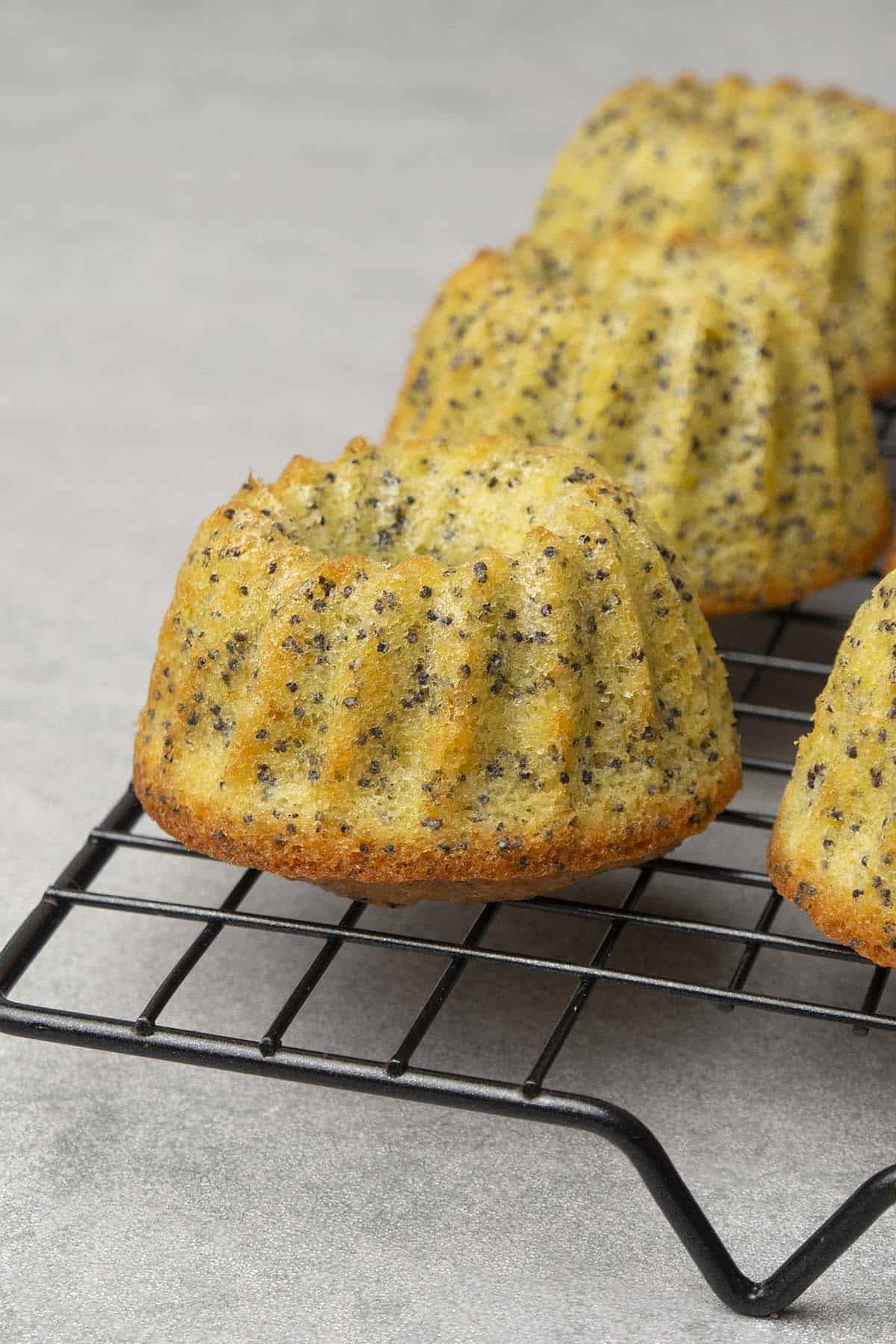
How to Properly Cool a Bundt Cake
With most recipes, bundt cakes need some time to chill before attempting to remove them from the pan.
- Once it is thoroughly cooked, remove it from the oven.
- Let the cake sit for at least 10 minutes to cool down.
- Next, cover the top of the pan (the base of the cake) with a wire cooling rack and parchment paper and flip the pan. If the pan has been greased and floured correctly, it should drop right out.
- Carefully remove the pan and let the cake continue to cool completely.
- Alternatively, for larger Bundt cakes, it is worth cooling the cake upside down with the Bundt pan on it and only removing it when it is completely cooled
How to get stuck cake out of bundt pan?
If you've followed all of the instructions and still have a stuck cake that doesn't budge, try these additional tips:
- Gently bang the pan: Once you flip the cake, gently knock on the bottom of the bundt pan with a spoon. This is a good practice as an extra safety measure to help loosen the cake from the sides of the pan.
- Use an offset spatula: An offset spatula can be very handy to loosen up the pieces of the cake that stick to the sides. Do so slowly to avoid breaking the pieces, and definitely do not use a knife!
- Add some steam: Sometimes, extra moisture helps to loosen up the cake from the sides of the pan. Take a hot, damp kitchen towel and place it over the top of the pan until it is cool enough to touch. When you flip it, the steam should help release the cake.
- Let it sit longer: With additional time, sometimes the cake will loosen and release from the bundt pan on its own.
Let me know below if you found any other tips or tricks in regards to how to get cake out of pan when stuck?
Expert Tips for How To Keep Bundt Cake from Sticking to the Pan
- To make your life easier, always use a non stick pan!
- Never skip greasing and flouring the pan. It's essential to make sure that every inch of the pan is covered, even the cone in the middle.
- If using a steel bundt cake pan: After coating your bundt pan with butter and flour, freeze the pan while preparing your cake batter. Doing so will aid in the prevention of the cake sticking to the pan.
- For the most effortless cake removal (as well as the perfect definition), use a silicone bundt cake pan.
- Avoid using ingredients that could caramelize into the pan and cause it to stick to the sides.
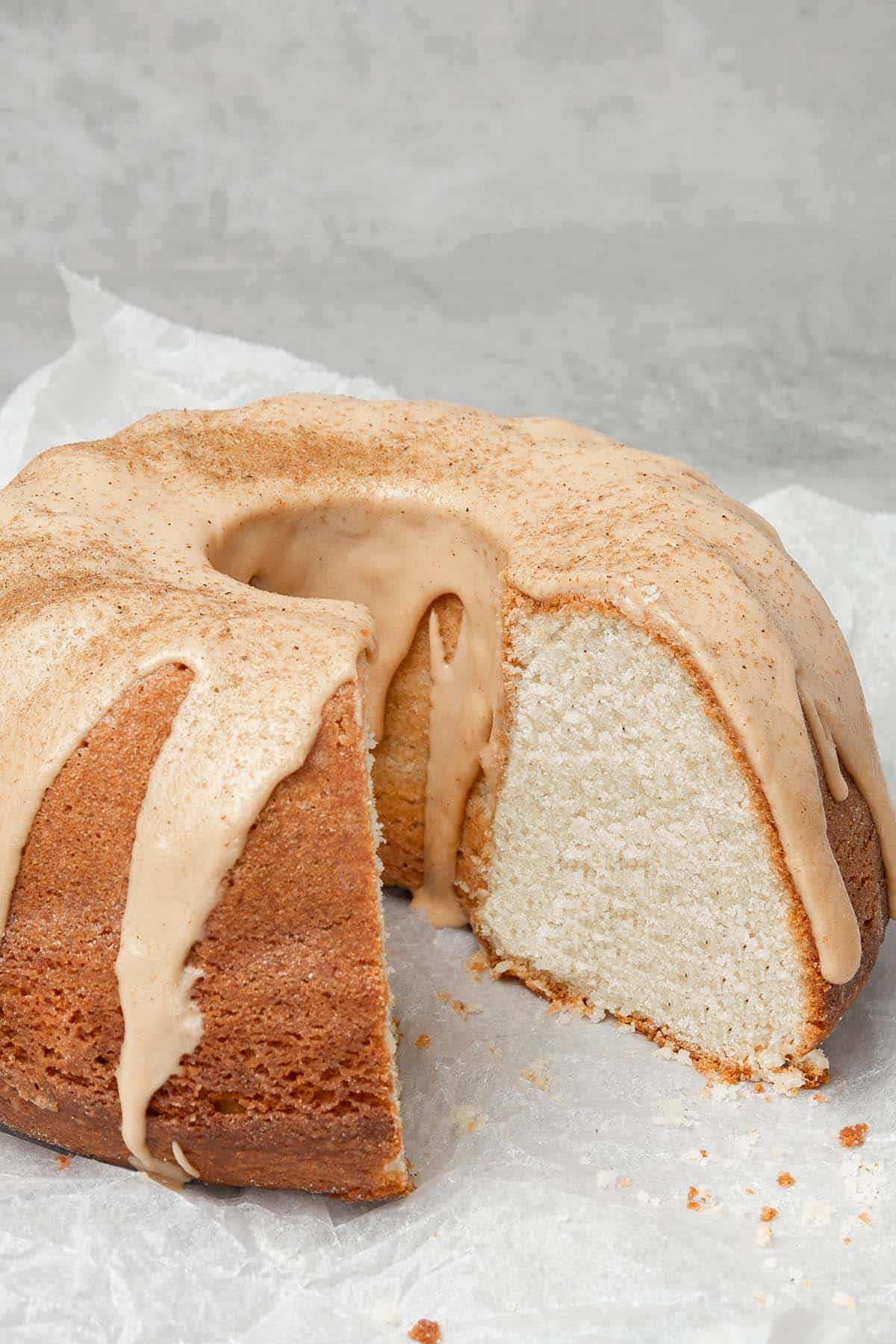
Recommended Equipment
The quality of your equipment matters a great deal when making a bundt cake. In addition to using well-coated, non stick pans when baking, your equipment should be clean and free of any residue that could potentially cause your cake to stick.
The balance of ingredients plays a big part in how to get cake out of a bundt pan. So before you even begin baking, use a digital scale to ensure that you're using the proper amount of ingredients.
A pastry brush will help evenly spread your soft butter across the bundt pan's grooves and crevices when flouring and greasing the pan.
A steel bundt cake pan is one of the more traditional bundt cake pans that evenly distribute the heat throughout the cake.
If you're new to bundt cakes, I highly recommend a silicone bundt cake pan. It is the easiest to remove the cake from the bundt pan. Silicone cake pans are also great for creating bundt cakes with intricate designs.
A digital oven thermometer ensures the cake is baking at the right temperature. The last thing you want is a cake that is overbaked on the outside and underbaked on the inside due to an inaccurate oven.
A wire cooling rack and parchment paper are necessary when flipping and cooling the cake.
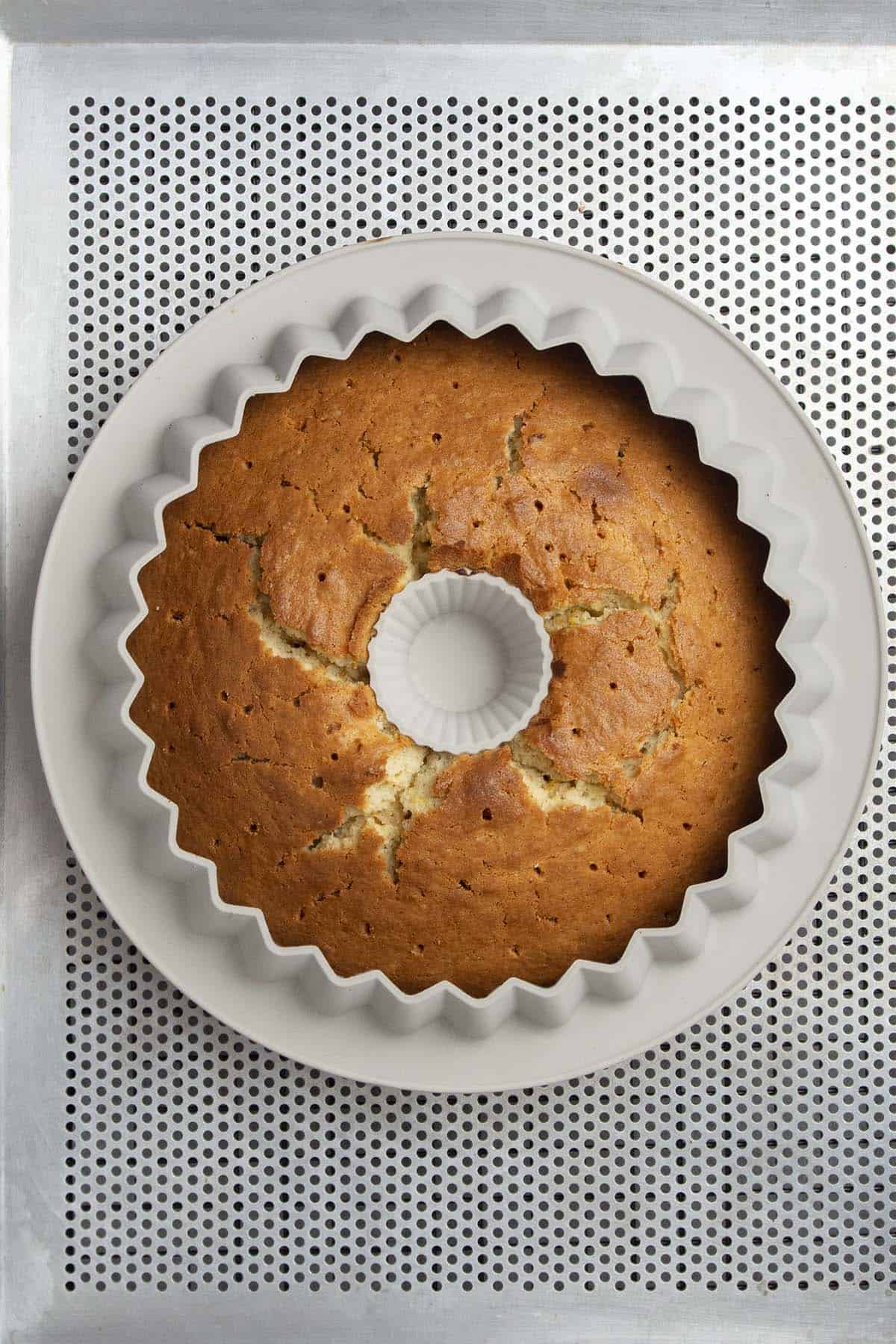
Bundt Cake FAQs
If you've followed the tips and tricks in this guide for how to get cake out of a bundt pan yet still end up with a damaged cake, don't worry! There are still ways to turn a broken bundt cake into delicious alternative dessert recipes.
If your recipe includes icing or glaze (as many do), you can use it to cover up any minimal damage, such as cracks or small crumbles that you stuck back together.
If your cake ends up completely crumbled, you can always use the crumbles as toppings for cupcakes. Or, serve them as a truffle dessert in individual cups with a side of ice cream or whipped cream and fruit on top.
If your bundt cake turns out raw in the middle, it is either due to the lack of time in the oven, lack of enough heat, or lack of proper ingredients. Perhaps you took the cake out of the oven too soon and will need to stick it back in for a few more minutes, or the oven is not at the right temperature (another reason why it's worth it to have a digital oven thermometer)! It is also possible that you did not measure the ingredients properly. A digital scale can help avoid this issue in the future.
Yes, a bundt cake generally should be cooled upside down. However, this will only work with bundt cakes with high-fat content. Lighter cakes could set further as they cool, and attempting to flip them while warm could result in them breaking. Additionally, you must ensure that the cake has risen enough in the pan, so it doesn't "fall" out and breaks apart once flipped.
While bundt cake pans come in a number of sizes, a 10-inch bundt cake pan is standard and will accommodate a 10-12 cup recipe. If you choose to use a larger pan, try to choose a pan that is taller versus wider. A taller pan will create a more dramatic and attractive cake versus a wide pan that will produce a flatter cake. However, the bigger the pan the more experience it requires to bake it throughout.
When I am in a rush, I often place my bundt cakes and cakes into the fridge or freezer to speed up the cooling. If you decide to go with the freezer, please make sure that you check on it every 15 minutes as you don´t want to freeze it before removing it from the pan.
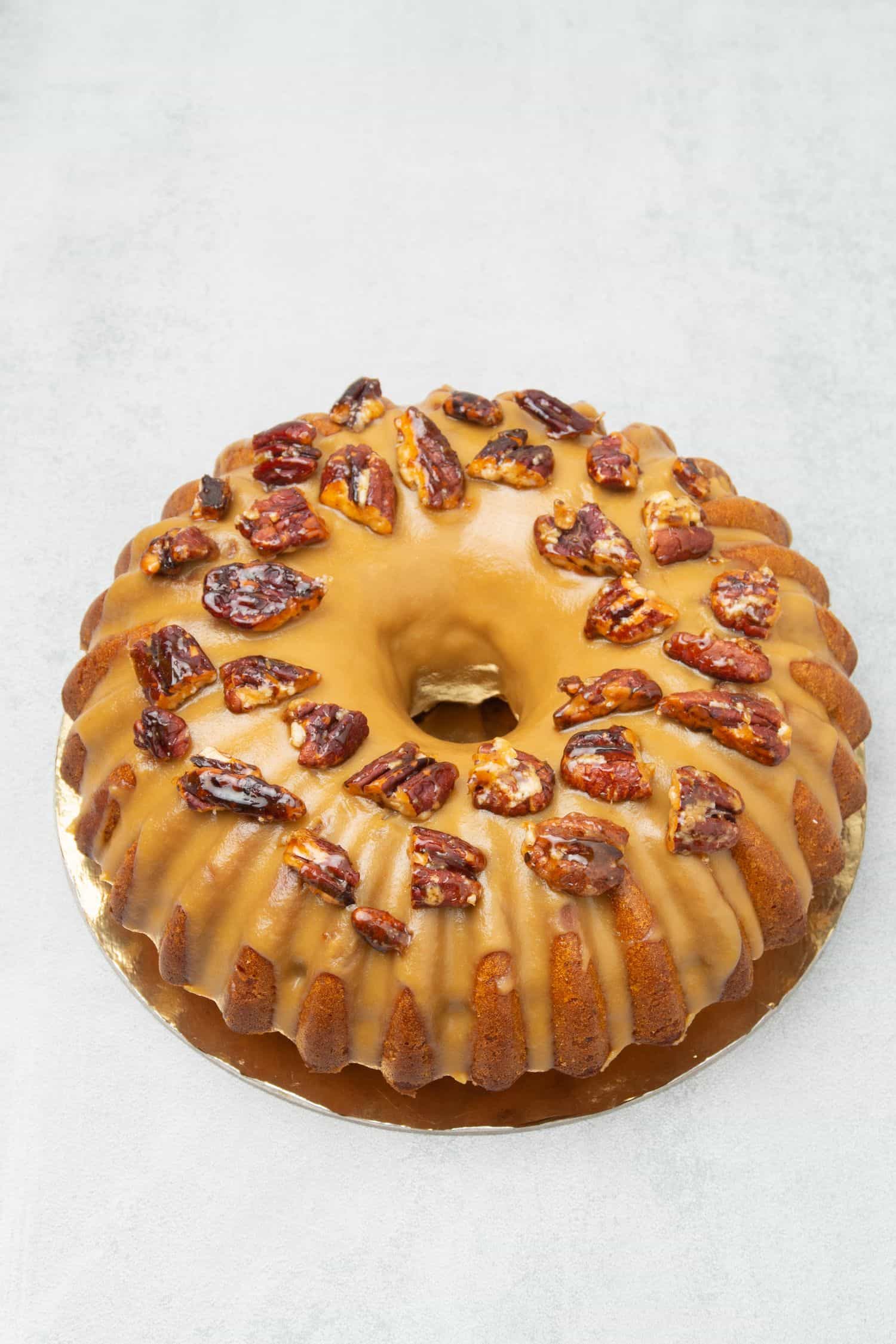
Conclusions
Bundt cakes can add a pop of elegance to any dessert table. At the end of the day, getting cake out of a bundt pan without a hitch depends on several factors. Your equipment, the proper amount of ingredients, the proper temperature, and the proper timing are all important.
Always choose high-quality equipment and non stick tins to work with. They will undoubtedly make a difference in how the cake bakes. It will also significantly affect how easily it releases from the pan. Never make adjustments or substitutes for your ingredients, unless specified in the recipe. Additionally, don't skip critical steps such as greasing and flouring the pan!
When baking your cake, texture matters just as much as timing. The toothpick test will help you evaluate if your bundt cake needs to be baked longer or is complete. While some cakes may stay intact when flipped over warm, it is still best to let the cake cool down.
If you follow all of the bundt pan hacks provided in this guide, you'll end up with a beautiful and flawless bundt cake that your guests won't stop raving about!
Bundt Cake recipes
The best-made bundt cakes are moist, rich, and have the proper balance of wet and dry ingredients and fat content to help them rise properly. They are also slightly crunchy on the outside with a moist interior that nearly melts in your mouth!
Here are some of my favorite bundt cake recipes that have all of the above properties, are easy to bake, and are mouthwateringly delicious!

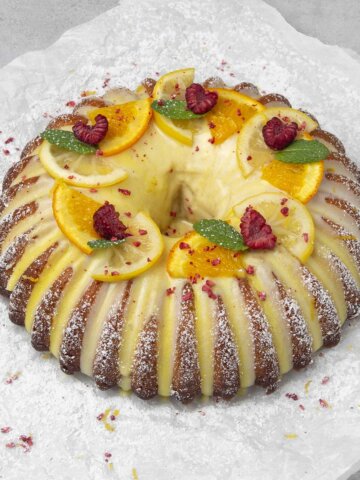

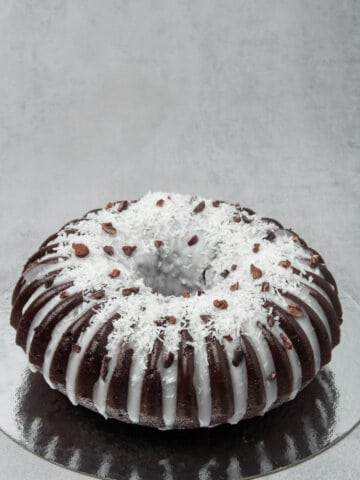
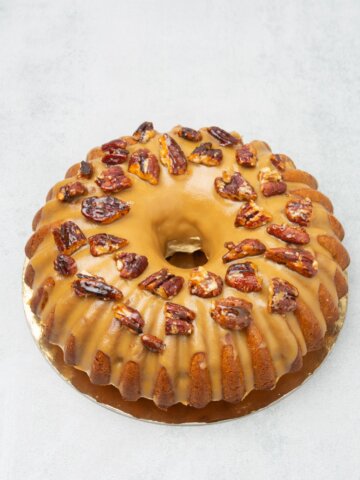
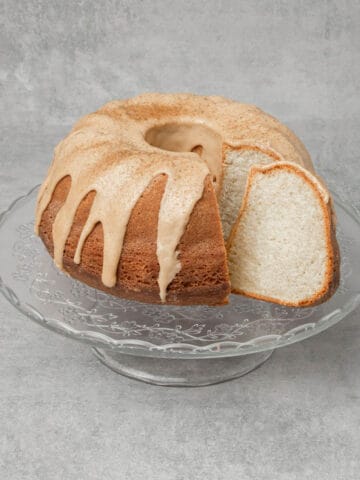

Carol Hamsing
I am 78 and just want to be at home with making Bundt cakes actually with all baking! Your tutorial on Bundt cakes has given me the confidence I needed. The only thing is I could not find the way to sign up so I automaticly for your updates. Could you please sign me up?my email is caroljh@wi.rr.com
Katalin Nagy
Thanks for your kind message. There should be a pop up when you scroll on my recipes where you can sign up to my newsletter (you will get my top tips to make moist cupcakes at signing up:) )
Happy baking!
Kata